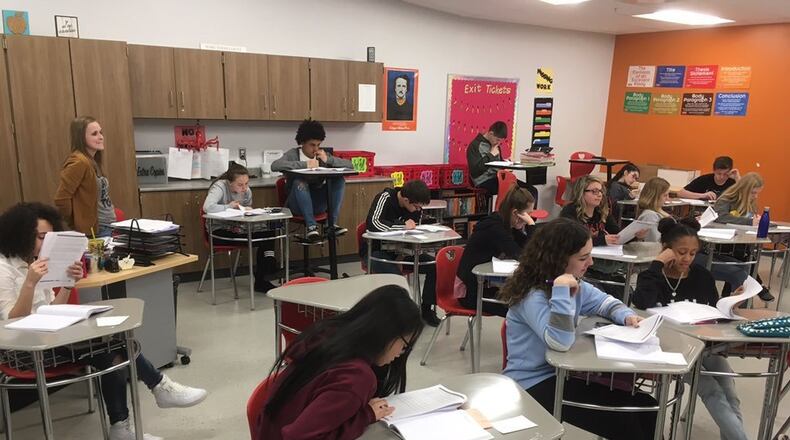Lani Wildow, director of curriculum and instruction for Butler County’s Fairfield schools, said the 9,500-student district has been preparing throughout the year for the tests.
“Our students and staff are prepared and ready for state testing to begin the week we return from spring break. They have been working hard throughout the year to learn the standards through engaging lessons, authentic activities, and the use of technology,” Wildow said. “We are certain our students are going to perform well.”
Franklin schools Assistant Superintendent Robyn Donisi said her district gives students a few days after spring break “to get back in the groove before testing” and like many schools, will only give students one test segment on any given day “to minimize test fatigue.”
Tests are primarily given online, and each test is made up of two segments (usually 75 or 90 minutes per segment). Some schools space the tests out, while others try to get through them more quickly.
Approaches to the state tests vary. In recent years, many districts have questioned the validity of the state tests, on issues from alignment with content standards as well as grading and cut scores. Some state tests have been eliminated, and State Superintendent Paolo DeMaria recommended cutting more.
Meanwhile the Fordham Institute on education has argued that standardized tests are crucial, giving an objective view of academic performance and holding schools accountable.
Test basics
Each school district chooses a 15-school-day window between March 25 and April 26 to give the state English tests, and another 15-day window between April 1 and May 10 for the math, science and social studies tests.
Students in grades 3, 4, 6, and 7 take an English test and a math test each year, for a total of 5 to 7 hours of testing, spread out over multiple days. Grades 5 and 8 test in English, math and science, for a total of 8 to 9 hours. The elementary-level social studies tests were eliminated two years ago.
High school students take seven end-of-course exams — in English I, English 2, algebra, geometry, biology, American history and American government. They take the tests in the year they take each of those classes, with an average freshman or sophomore often taking three tests per year, for a total of 9 to 10 hours of testing, spread out over multiple days.
Each test is supposed to be aligned to the academic content standards for that grade and subject, which teachers have been instructing students on throughout the year.
Scheduling quirks
Spring break is one hiccup in test scheduling, as dozens of districts throughout the region are off school this week, and more are off next week. Some will jump into testing quickly after they return.
In some districts, for example, a fifth-grader would take the two segments of their English test April 15-16, then the two parts of their math test May 1-2, and the two pieces of the science test May 6-7.
Others pack all of their tests from April 1-5 and 8-10 (with time for makeup tests through the following week). Principal Jeff Berk of southwest Ohio’s Wayne High School said he thinks that’s better for his high school students’ schedules.
“Sometimes it’s a little better for the students when they can say, OK, this week is testing week, and they can get in that mode,” Berk said. “You get it done where they’re not having stressors for an entire month because they’re testing two days this week, two days that week and three days next week, and jumping back and forth.”
During Wayne’s eight testing days, only students who are testing on a given day show up at the regular 7:50 a.m., and they go right into a test segment. The non-testing students arrive on a two-hour delay as those tests are ending. For the rest of the shortened day, Berk said students attend their odd-numbered periods one day, and even periods the next day, with each given an 80-minute class period so teachers are not rushed.
“With our infrastructure for wifi access, and the state-required test proctor ratios, with our limited staff, we wouldn’t be able to operate a regular day for the rest of the students without the delays,” Berk said.

